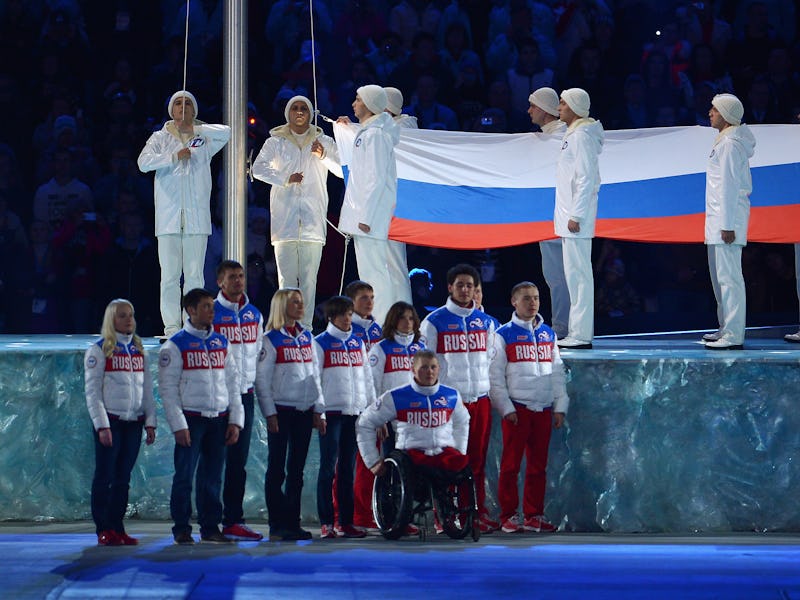Olympic Ban on Russia Shows What Happens When Doping Science Gets Sloppy
Russia's covert doping program was good -- but not good enough.

Russia has officially become the first country in history to be completely banned from participating in the Olympic Games. On Tuesday, the International Olympic Committee announced that Russia’s team is banned from participating in the 2018 Winter Games, set to take place in Pyeongchang, South Korea on February 9, 2018.
The ban is a direct response to Russia’s extensive, meticulously planned state-run covert doping program, which was exposed in 2016 after 15 Russian athletes had medaled at the Sochi Winter Games.
In 2016, the New York Times revealed the full extent of the doping program, which dozens of Russia’s athletes took part in both during Sochi and the London Olympics in 2012. Investigations into Russia’s doping program by the World Anti-Doping Committee began in 2014, after the German television channel ARD exposed it in the documentary Top Secret Doping: How Russia makes its Winners.
In 2016, the New York Times revealed the full extent of the doping program, which dozens of Russia’s athletes took part in both during Sochi and the London Olympics in 2012. It heavily featured an account from Dr. Grigory Rodchenkhov, the former chief of Russia’s anti-doping laboratory who spilled his nation’s secrets, who revealed that the athletes were given a “Duchess Cocktail” of three performance-enhancing drugs mixed with liquor, and then their tainted urine samples, collected by the I.O.C., were surreptitiously replaced with clean urine by a team of anti-doping experts and members of the intelligence service. It’s estimated that the team managed to swap out 100 of the closely guarded urine samples.
The Duchess Cocktail comprised three anabolic steroids: metenolone, trenbolone, and oxandrolone. In a previous article, Inverse described what each of these drugs actually do:
Oxandrolone is a synthetic hormone variant of testosterone that has anabolic and androgenic properties, which relate to muscle building and male sex characteristics, respectively. Medically, oxandrolone is used to help people gain weight after surgery. Methenolone is also an anabolic-androgenic steroid and can boost a body’s muscular strength and mass. Trenbolone is an anabolic steroid that was once widely used in the bodybuilding community but is now banned. Today, it’s legally used by the beef industry to bulk up and increase food-to-mass conversion in cattle.
'Doping control' stations were all over the Sochi 2014 Winter Olympics in Russia.
These three drugs last for a relatively short time in the human body, reducing the risk that they will show up in an athlete’s urine. Rodchenkhov revealed that athletes swished the drugs around in their mouths, where they would be absorbed through the cheek lining, further shortening the detection window. Before the London Olympics, the doping program relied heavily on injected drugs such as oral turinbol, which are easier to detect.
Investigations by the World Anti-Doping Agency and, subsequently, the International Olympic Committee revealed Rodchenkhov as the key player in the Russian program in 2016. After his role in the doping scandal became public, Russia forced him to resign, and he moved to the United States and came clean to the public. Around the same time, two of his former colleagues in the Russian anti-doping agency mysteriously died. By the end of 2016, however, Russia no longer denied the existence of the program.
The I.O.C.’s ban on Russia at the Pyeongchang Olympics prevents the country’s athletes from participating in any way unless they wear a neutral uniform and receive an official dispensation to compete, and Russian officials are not allowed to attend the games. It’s not clear whether the ban will be a permanent one, and Russia has yet to respond to the ruling.